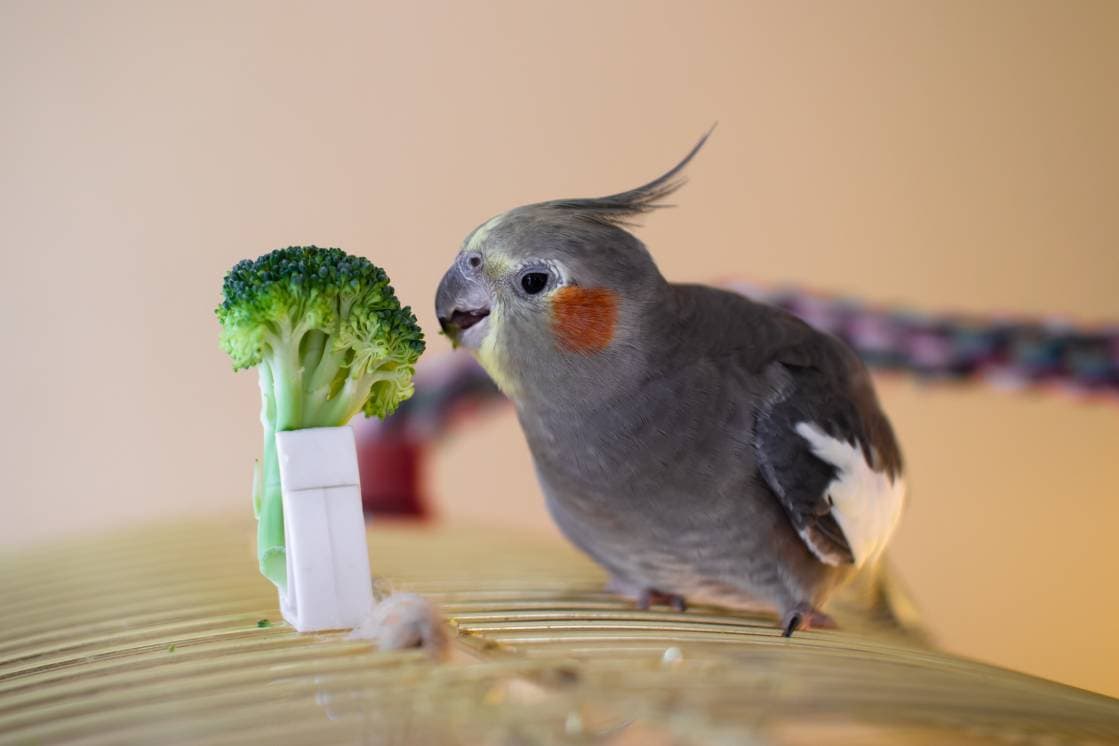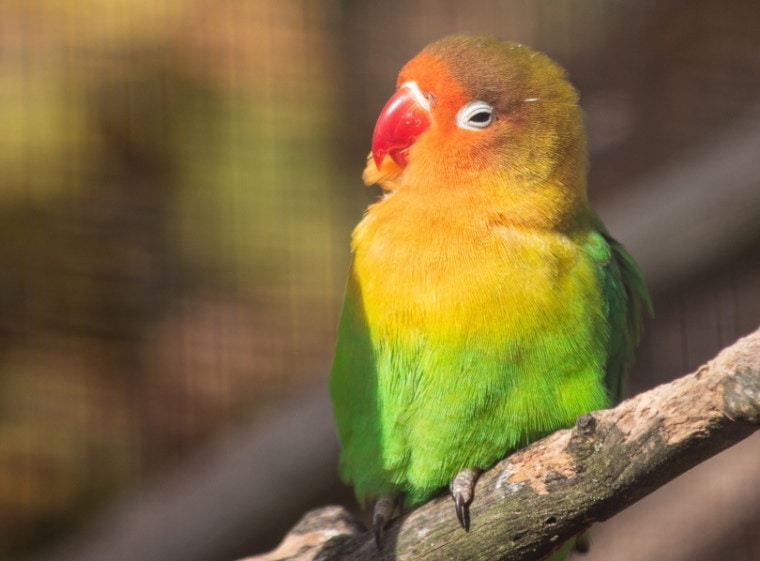
The Lutino Peach-Faced Lovebird is a mutation of Peach-Faced Lovebirds. It’s the most popular mutation, followed closely by the Dutch Blue Lovebird.
This bird has the characteristics and charm associated with the Peach-Faced bird species. They are playful, active, and intelligent little birds that make them an excellent companion.
If you are a beginner, these birds are a great choice because they are easy to care for and breed, and relatively hardy. Hand-raised Lutino Peach-Faced Lovebirds will be incredibly affectionate.
They are also very social; therefore, they need to live closely with another lovebird. However, if raised singly, they’ll need a lot of attention.
Here are some of the critical details you need to know if you are considering keeping a Lutino Peach-Faced Lovebird.
Species Overview
| Common Name: | Lutino Peach-faced Lovebird |
| Scientific Name: | Agapornis roseicollis var |
| Adult Size: | 6 – 7 inches (15 – 17 cm) |
| Life Expectancy: | 15 – 30 years |
Origin and History
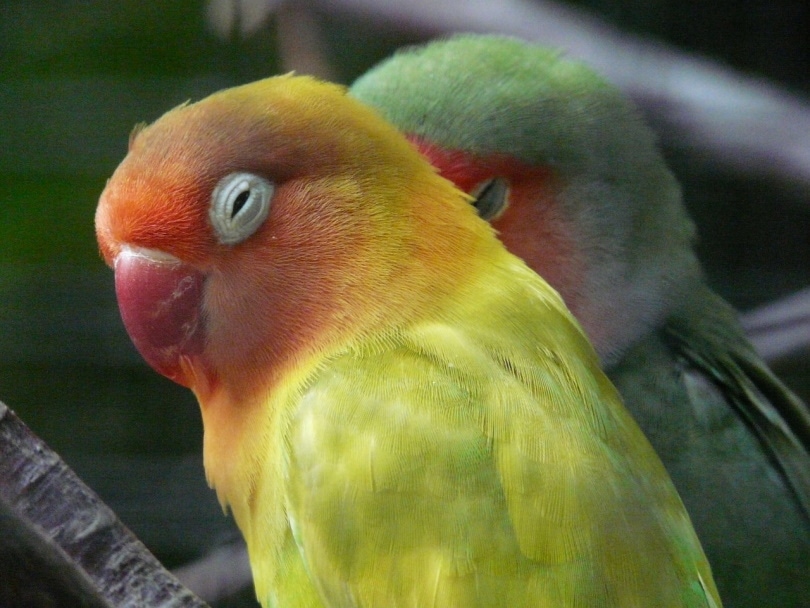
As a sub-breed of the Peach-Faced Lovebirds, these Lutino Lovebirds come from the arid and woodlands areas of Southern Africa. Since they are native to hot temperate regions, they prefer heat and don’t thrive well in cold climates. As pets, they have become popular because they are easy to train and breed.
Today, these Lutino Lovebirds are sex-linked via gene mutations. They are divided into Cinnamon and American Cinnamon Lutino Lovebirds.
Because of their background, these bird species are well suited for the indoors, damp woodlands, and warm and calm environments.
Temperament
Lutino Peach-Faced Lovebirds are social, brave, and comfortable around people and other birds. They are also very affectionate, friendly, playful, curious, and active.
Due to their social personality, they enjoy playing with fellow lovebirds, human companions or engaging in activities that feed their mental activity. If you have other lovebirds, you can keep them in pairs.
Keeping them in pairs rather than singly is good for their health and happiness. However, it would help if you watched out in case they become aggressive with other birds in the aviary.
Because they form strong bonds, they become attached to their mates; whether a fellow lovebird or human companion. The downside to this is that they could become depressed with the loss of a mate. Therefore, socialization with multiple humans is needed to reduce co-dependency.
Their sweet, loving, and friendly nature make them great pets. Because they are playful, they enjoy the company of little children. In addition, they are also the least aggressive parrots, and they are very tiny. Therefore, they are less likely to hurt your kids.
Speech & Vocalizations
Lutino Lovebirds can talk. However, unlike other parrots, they are not much of a talker, but they talk freely and learn quickly when they do.
Since they don’t talk much, these birds don’t make a lot of noise inside the house. They also have the skill to learn selective words.
In addition, these birds like to mimic and imitate anyone around them. They have excellent observing skills; hence, they use this to copy what other people do.
Lutino Lovebirds Colors and Markings
This striking bird has an overall yellow coloring and a bright red face. The Lutino Peach-Faced Lovebird mutation is caused by a sex-linked gene that removes the melanin. While the dark pigment is removed, the yellow and red pigments remain unaffected.
These bird species are well known for their looks and physical appearance. The face of the Lutino lovebird is a peach, and it has a tiny downward-pointed beak.
Lutino Lovebirds have two other sex-linked mutations that partially dilute the melanin, referred to as Cinnamon or Fallow.
Caring for the Lutino Peach-Faced Lovebird
When you get this Lutino Lovebird, here are a few tips that you can use to take care of your bird.
Companionship
To keep this bird happy, you should provide some companions in the cage. However, if you choose to keep it as a single bird, you have to keep the bird occupied by playing and conversing.
Among all lovebird breeds, these Lutino Lovebirds are known for their wonderful personalities; They are the friendliest and most affectionate bird species. Because of this personality, they adore their companions and share a strong bond.
They are also very playful and social; therefore, they will enjoy hanging out with their fellow birds in the cage. However, they tend to be very possessive and get jealous when they don’t get attention from their mates; these can be other birds or their human caretakers. Once you put them together with other birds, they are highly likely to develop favorites.
Training
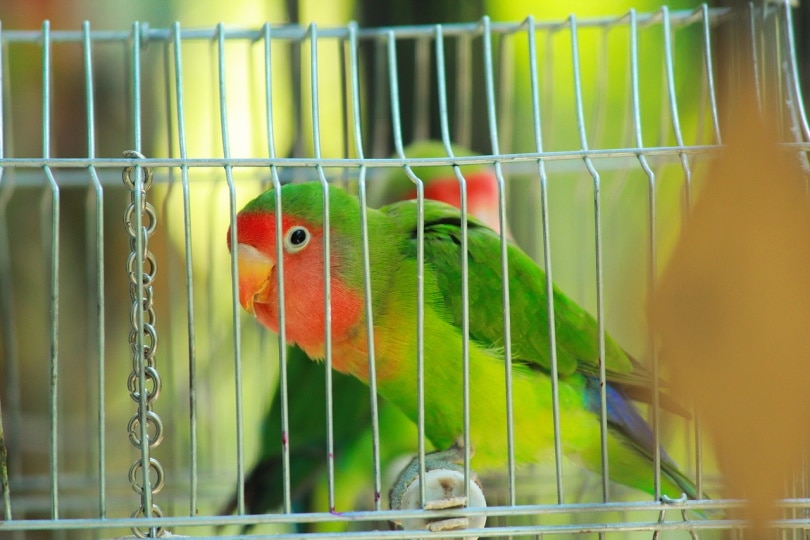
Lutino Peach-faced Lovebirds prefer to stay in large flocks with fellow birds. Therefore, if they feel isolated, it will become a challenge to tame them when you bring them home for the first time. If you don’t have any other bird species, it’s best to give the bird some time to adjust to new surroundings.
The advantage of keeping these birds is that they don’t have significant behavior problems. They are not much of a talker and don’t like talking; therefore, you will not be obligated to teach the bird how to talk. However, they are intelligent enough to learn a few words; hence, you can easily teach them.
You also need to train these birds not to bite. Biting is natural for most birds.
They use this behavior to express their dislike towards things. For instance, you might notice that your Lutino bites if it’s not comfortable with new and strange surroundings. If this happens, you’ll need to train your pet bird to stop biting.
Housing
These birds require a lot of exercise to maintain their health. To provide this, you should have a spacious cage and a lot of toys to keep the bird mentally stimulated.
In addition, they are active; hence, they will need some natural wood perches for their feet exercises. With proper exercise, your bird will remain healthy for long.
Grooming
Lutino Lovebirds love to bathe; therefore, the caretakers should provide a bathing bowl frequently. You should also trim the nails every three months to keep them short. These birds also molt twice a year in the fall and spring.
Common Health Problems
The average lifespan of these Lutino Lovebirds is 15–30 years. They tend to live longer in captivity because they get a more balanced diet and better care. Lutinos are prone to the following health conditions.
These birds are good at hiding infections and diseases. Even when they are sick, they find ways to conceal the sickness. Therefore, you need to be keen to notice any abnormal changes in their behavior, appearance, or attitude.
You should also watch for respiratory problems, indigestion, ruffled feathers, bleeding, vomiting, and excessive weight loss.
Diet and Nutrition
Lutino Lovebirds feed on a similar diet to other lovebird species. They enjoy a mix of seeds, fruits, vegetables, and commercial pellets.
Sometimes, they can be a bit picky and love to feed on nuts and seeds. Therefore, you should ensure that the seeds provide maximum nutrition for your pet bird.
Apart from the seeds, your bird will enjoy eating vegetables such as spinach, bell peppers, broccoli, celery, green beans, and zucchini.
A good diet and nutrition plan are essential if you want these little birds to stay healthy and strong. As long as they are healthy, they can live for longer.
If you notice any signs of lethargy or unhealthy behaviors, especially with food, it’s best to consult with your vet. They can also advise how much food you should feed your bird depending on their age and health.
Variety is essential for birds; hence, try and supplement formulated diets with some healthy table foods without the seasoning. However, even for this, you need to talk to your vet, who can advise whether these foods are suitable.
Exercise
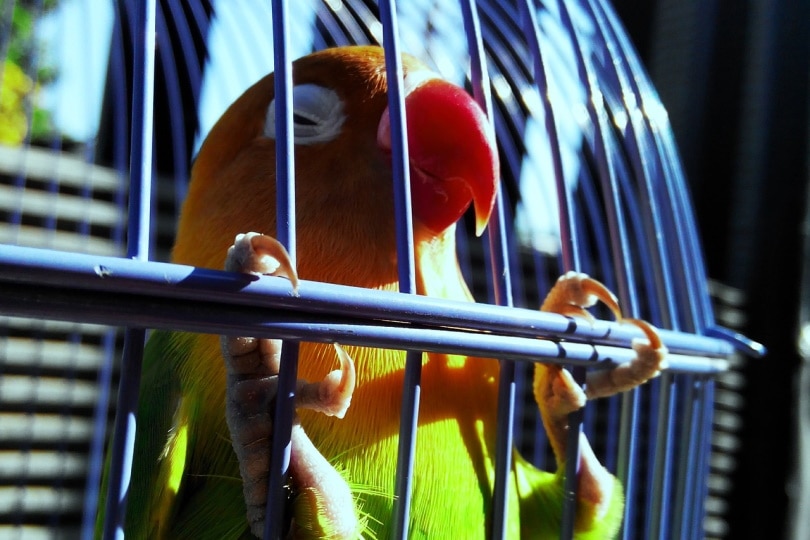
Lutino Peach-Faced Lovebirds love to fly, climb and play. Therefore, when getting a cage, ensure you get one with enough space for the bird to play without getting hurt or breaking its wings. Since they enjoy company from other birds, the cages or aviary should be large enough to house both birds.
Throw in some toys in the cage to keep the bird active. In addition, you should have some ladders and perches for the Lutino to use when playing.
Apart from the cage, these birds need to play outside. You can also release them from the pen to fly around the house for about an hour daily.
Once you release the bird, ensure the windows and doors are closed so that they can’t fly out. This is very crucial to ensure the bird gets their daily dose of exercise and gets socialized.
Where to Adopt or Buy a Lutino Peach-Faced Lovebird
For $80-$250, you can get a Lutino Peach-Faced Lovebird from a reputable breeder or a bird rescue. The price may also differ from breeder to breeder depending on the color mutation and bird’s age. Therefore, before getting one of these birds, you should research the best places to purchase one.
If the specific color mutation is in high demand, the price may also go up. Before adopting a bird from the breeder, ensure you visit their premises to check how they take care of the birds.
In addition, you can also request medical documentation and background on the health condition of this bird and its parents. This way, you can get a healthy bird.
Apart from the purchase price, you need to factor in the cost of acquiring initial supplies such as cages, toys, and food bowls for your bird.
Summary
The Lutino Peach-Faced Lovebird is an excellent pet bird. It’s a low-maintenance bird that’s easy to keep and breed.
When getting one of these Lutino lovebirds, you should keep in mind that they need companionship. They enjoy living in small groups; therefore, you can add some other lovebirds in the same cage.
These birds are active, social, and very intelligent creatures. If you need a fun and playful companion for your house, this bird is a perfect choice.
Featured Image Credit: minka2507, Pixabay







